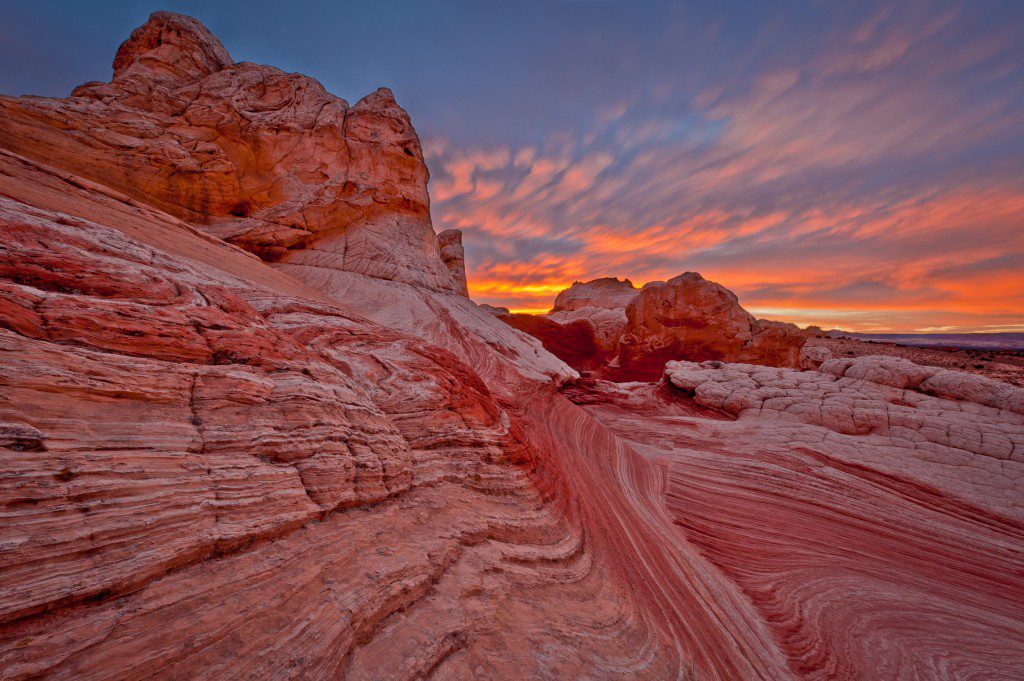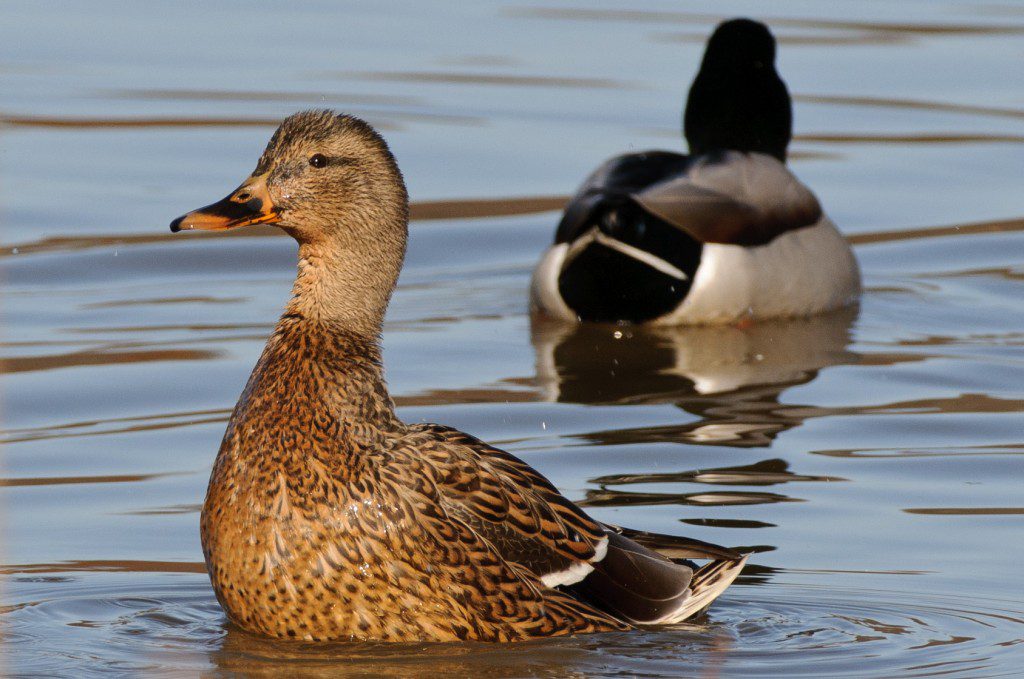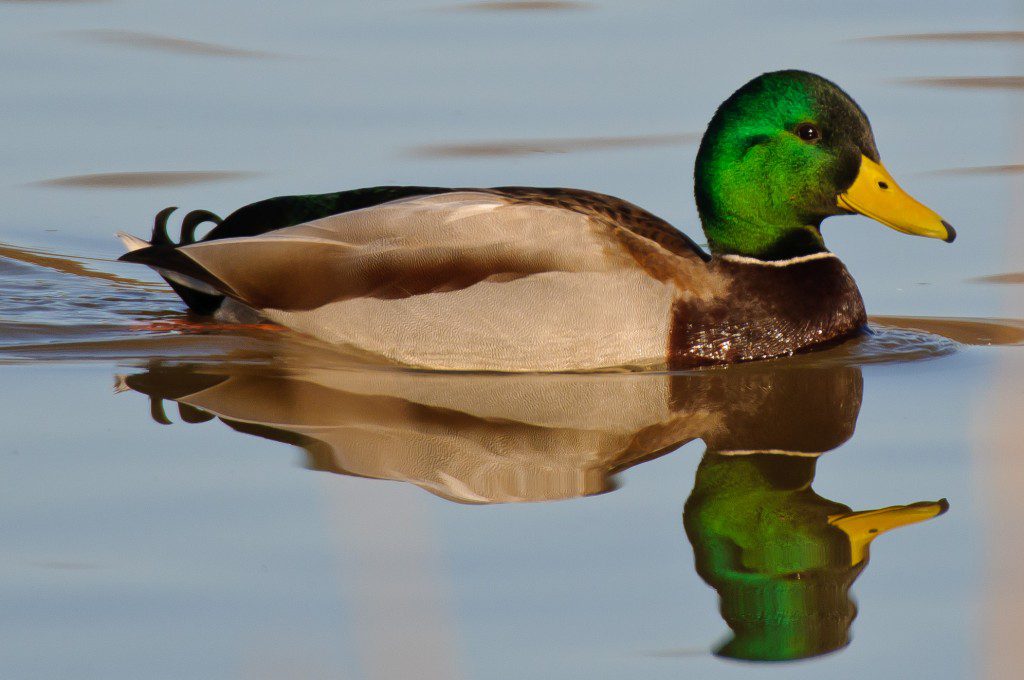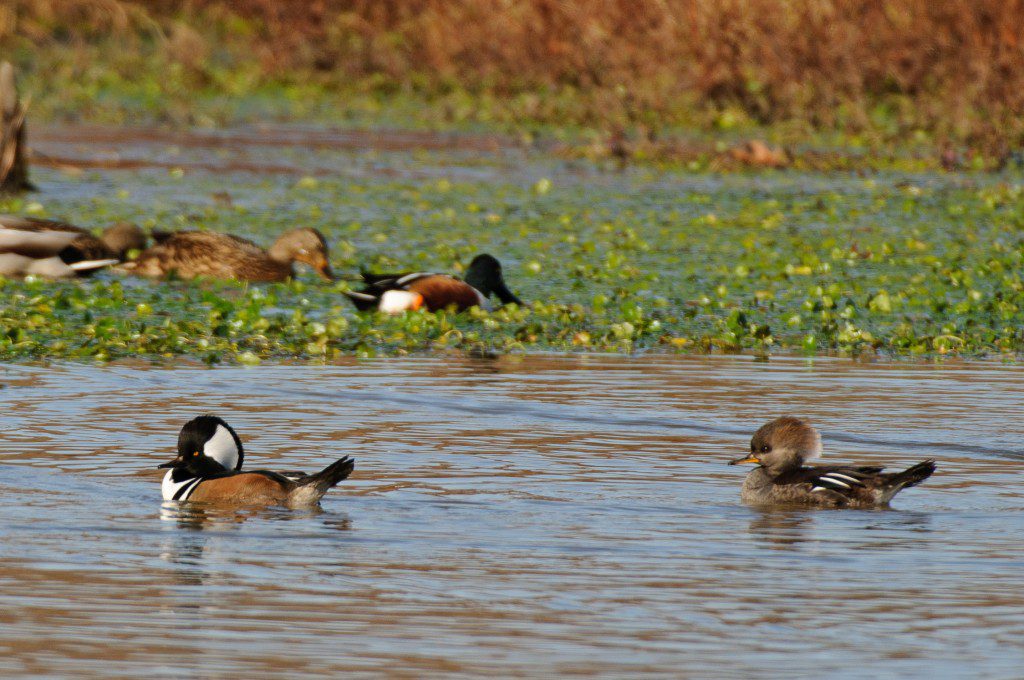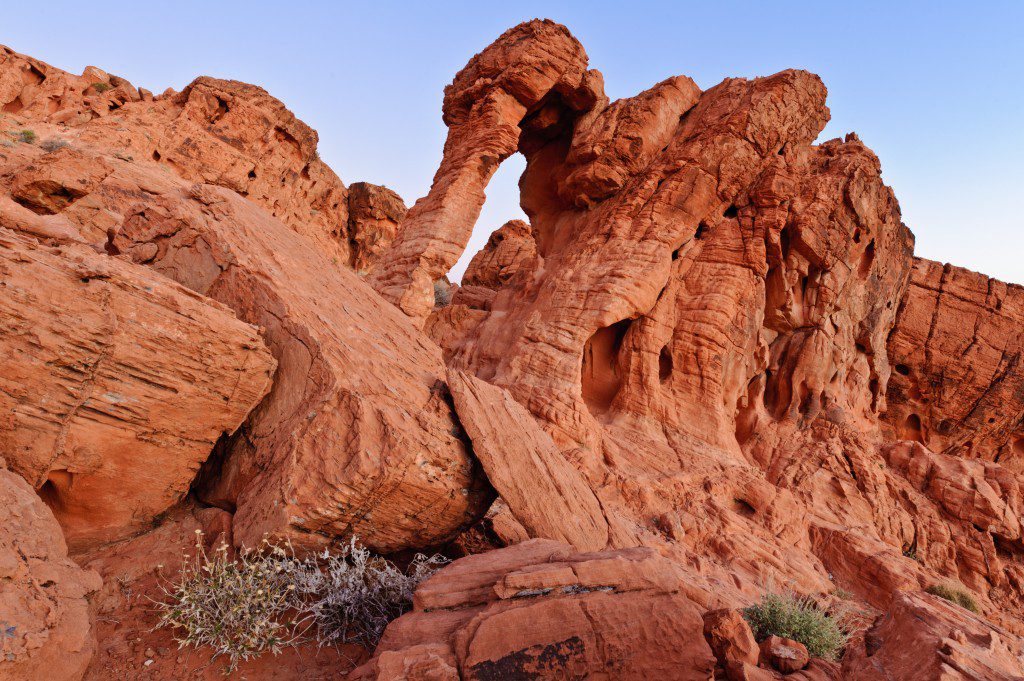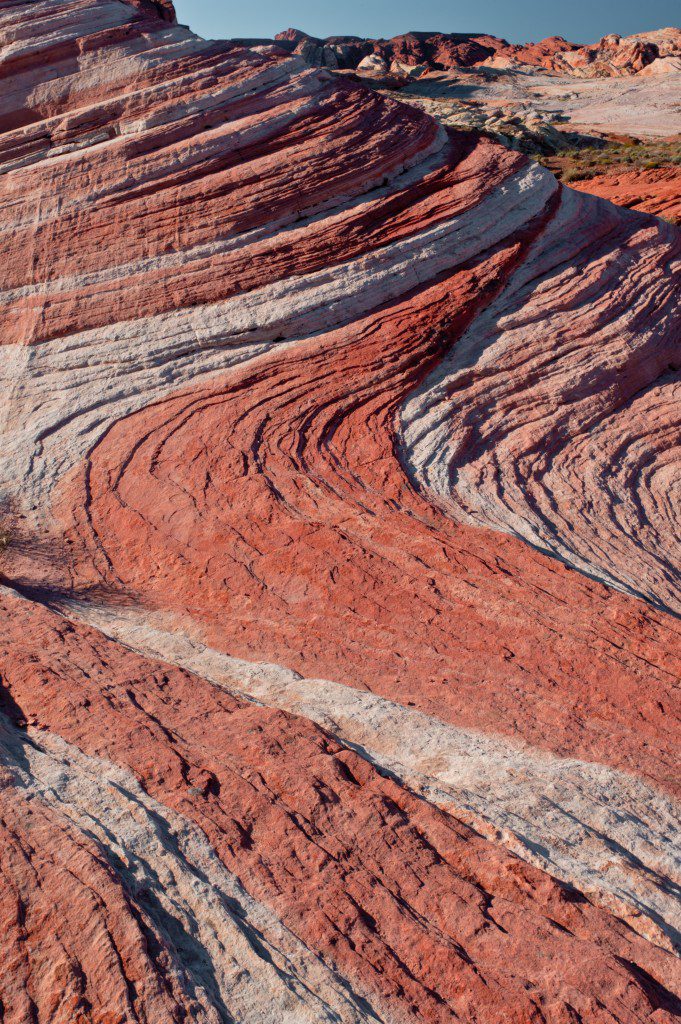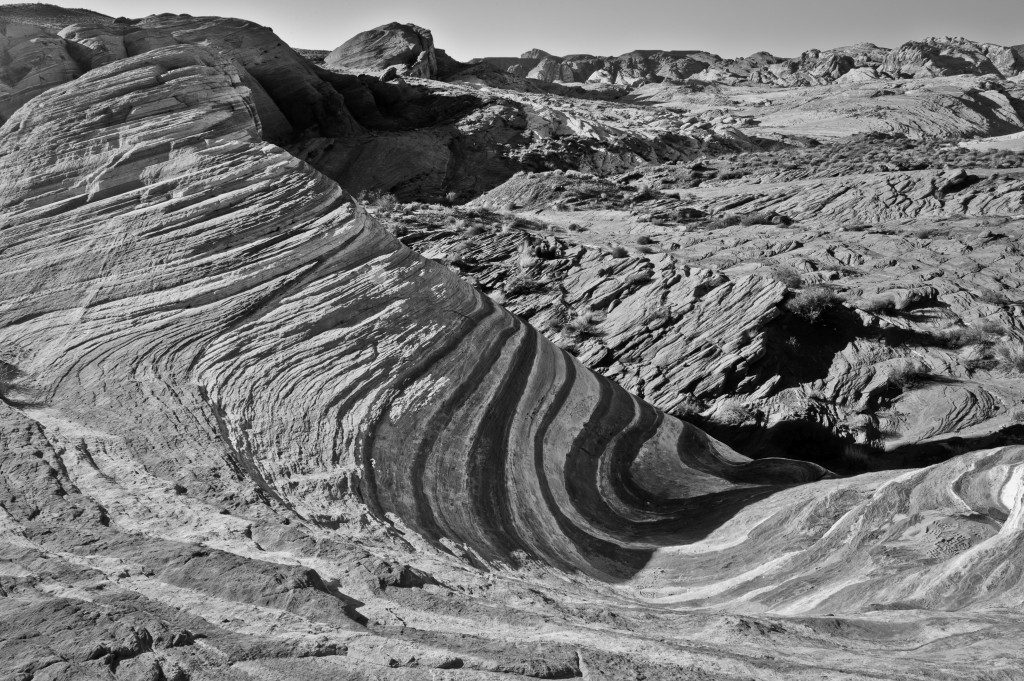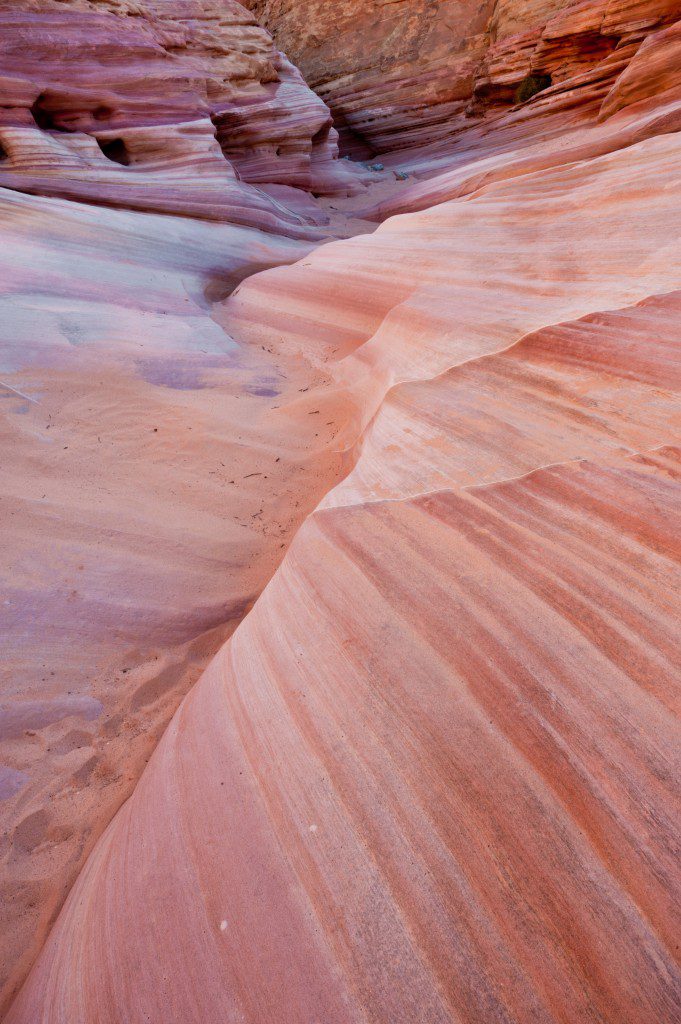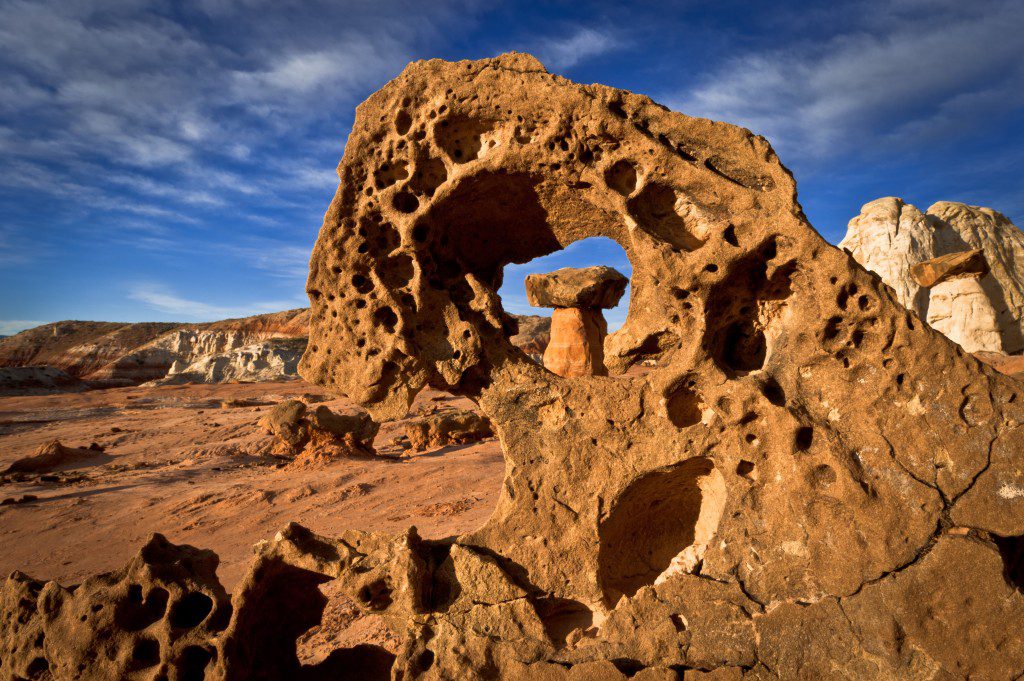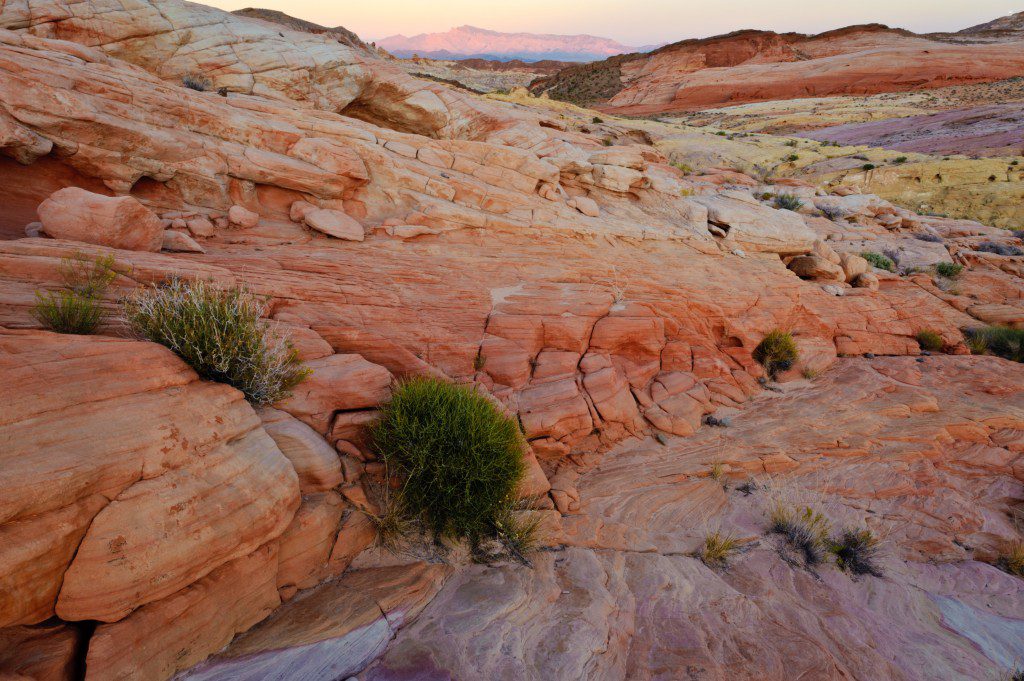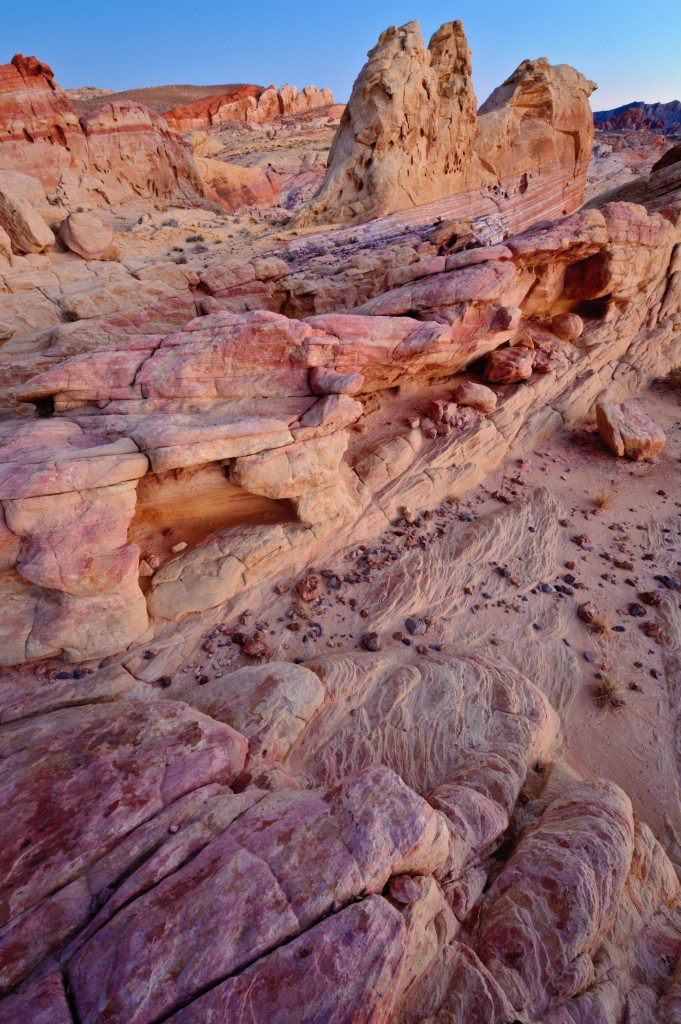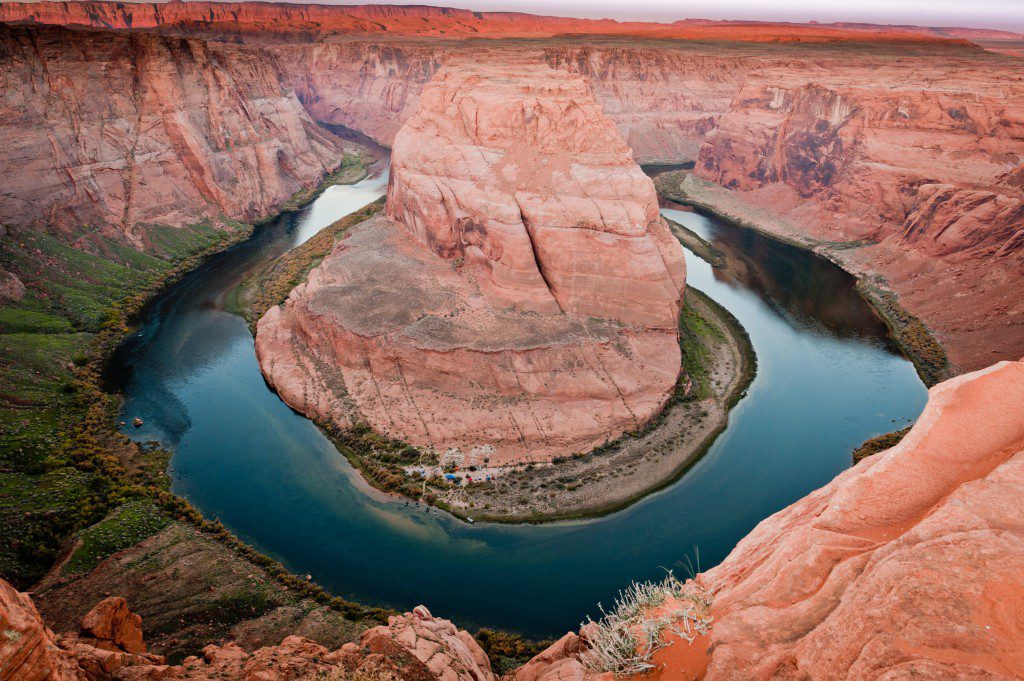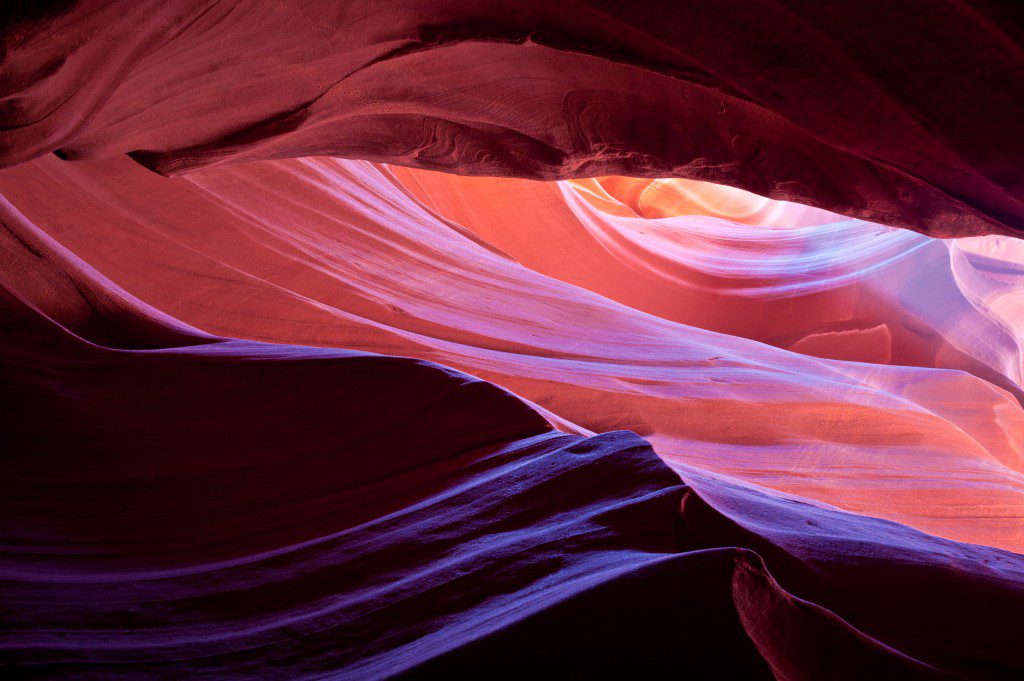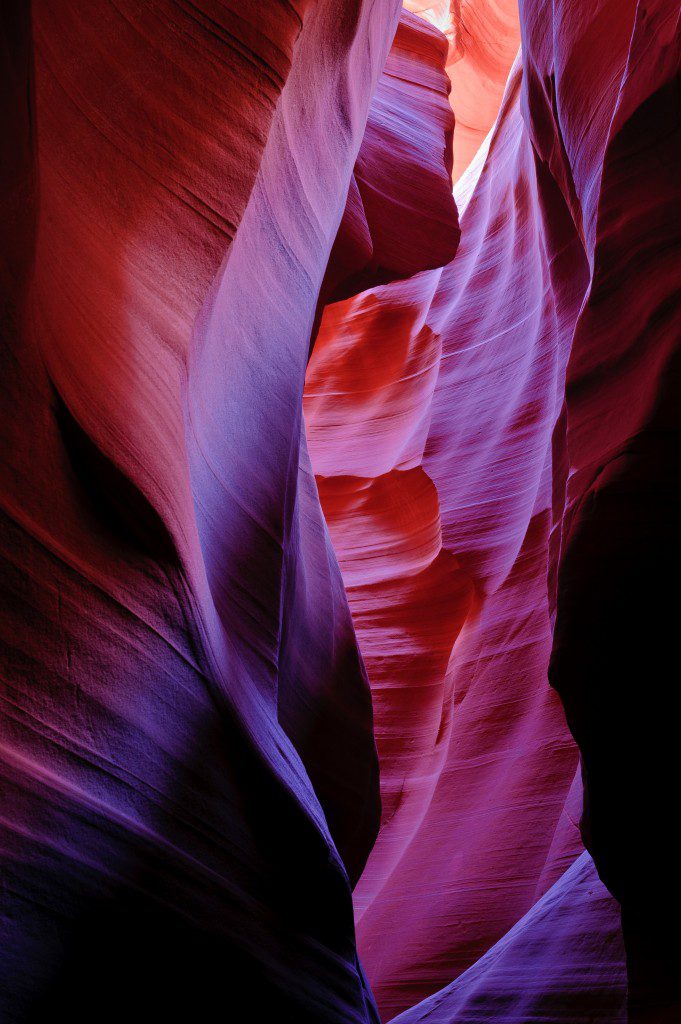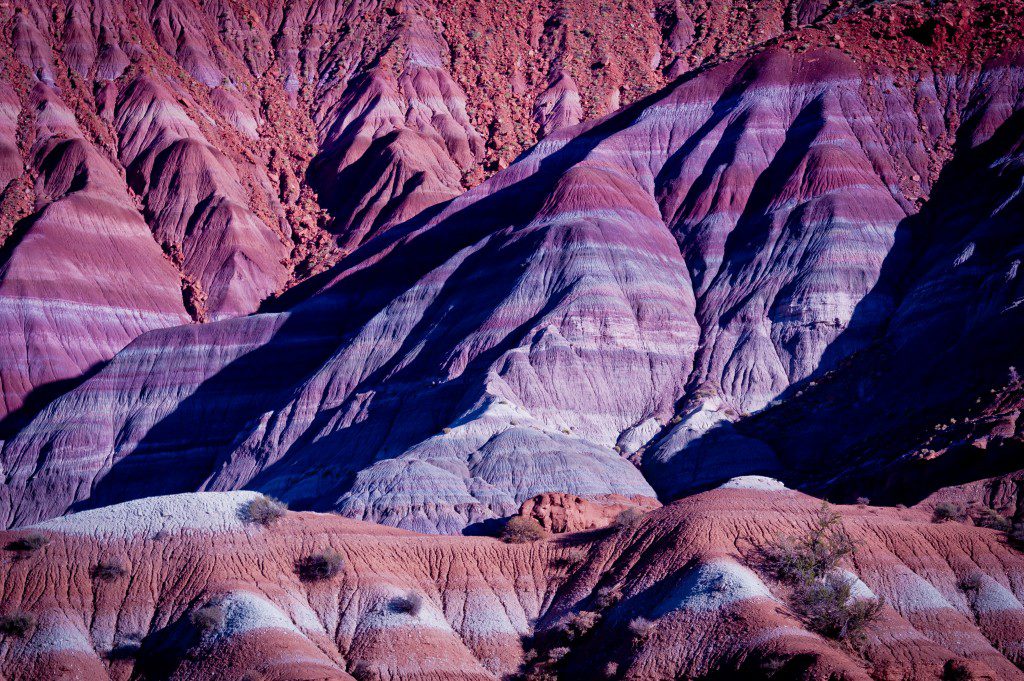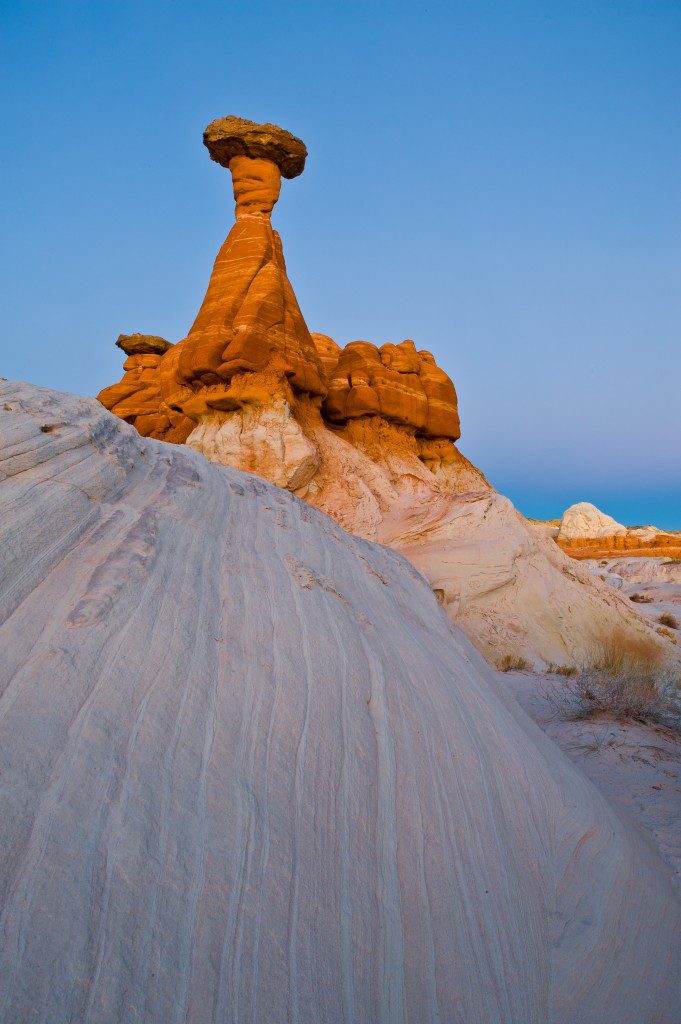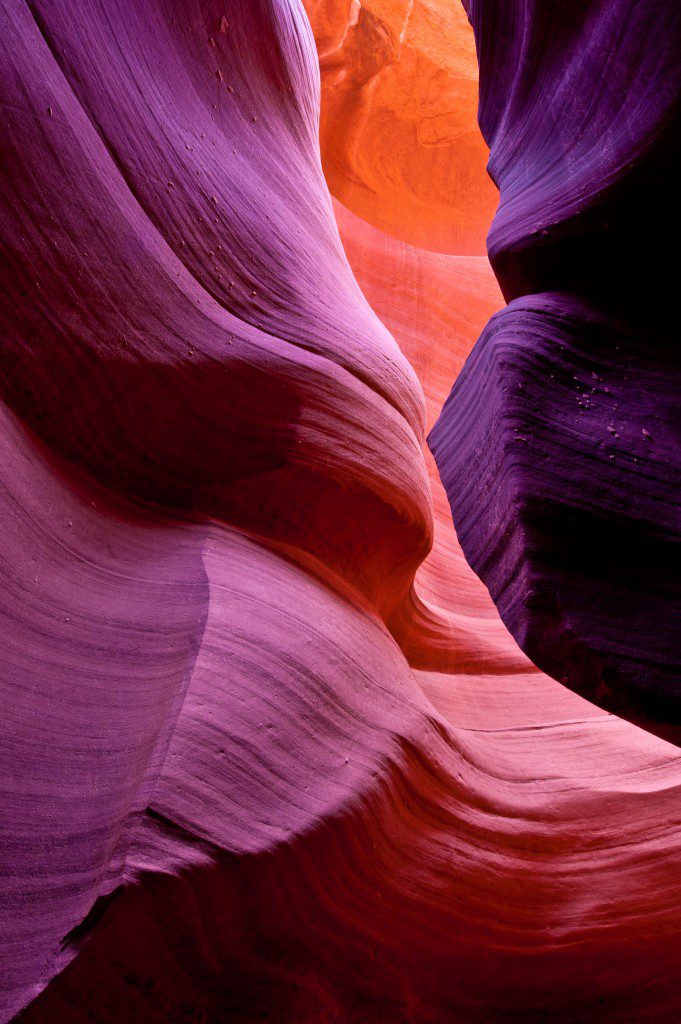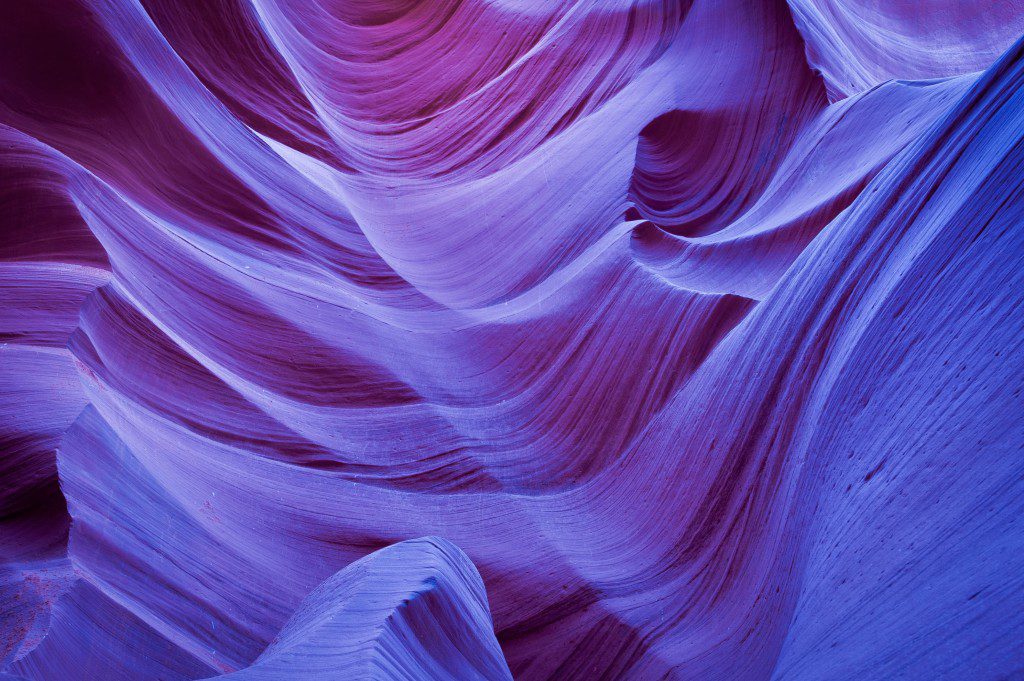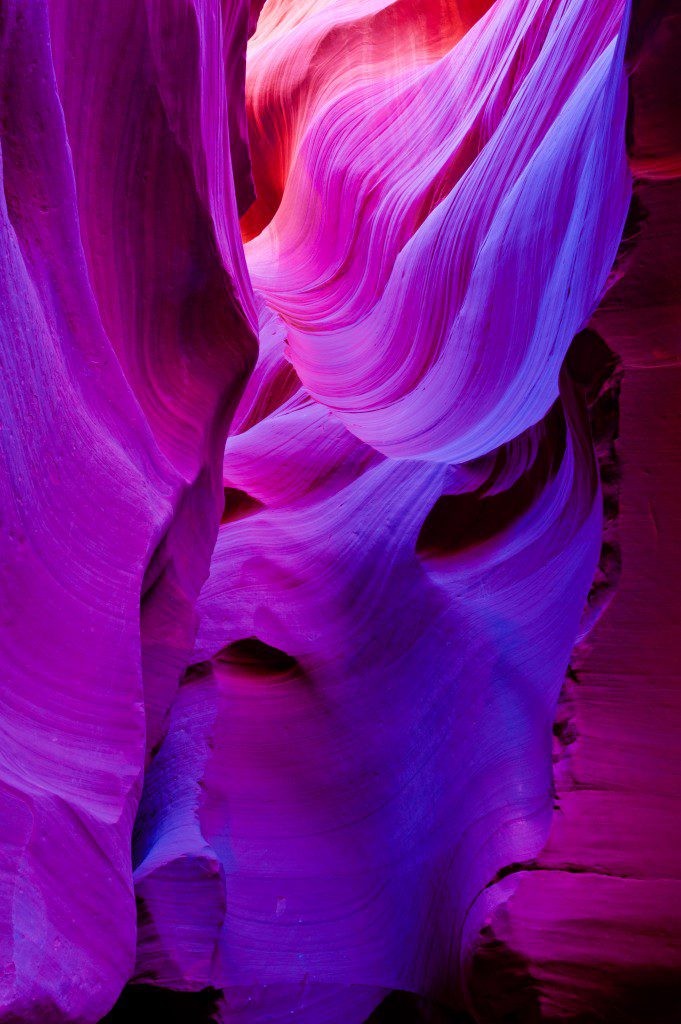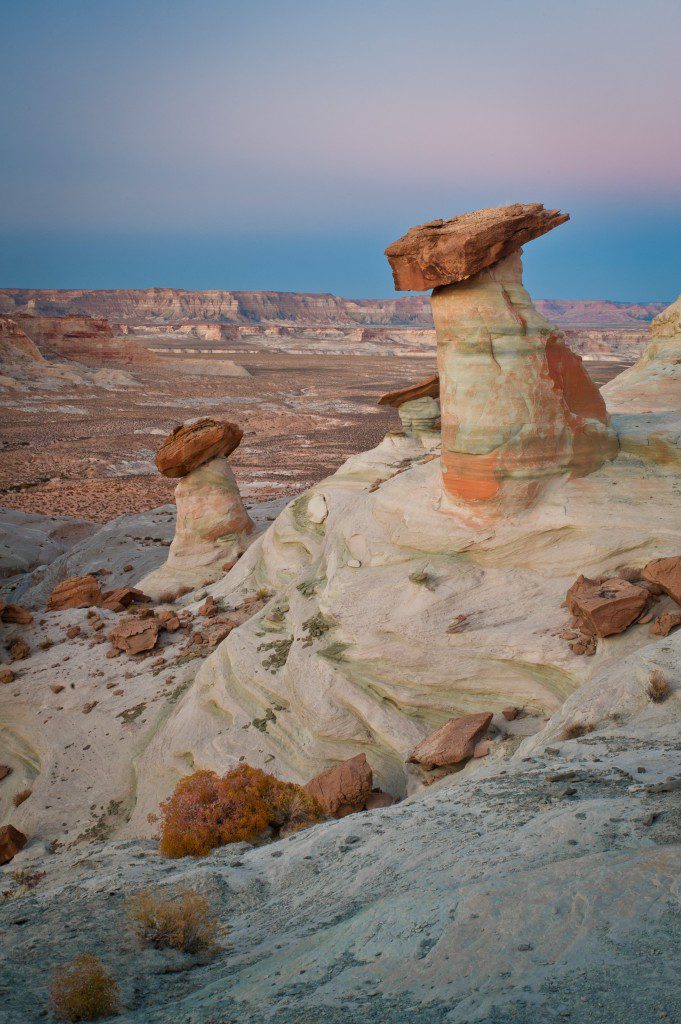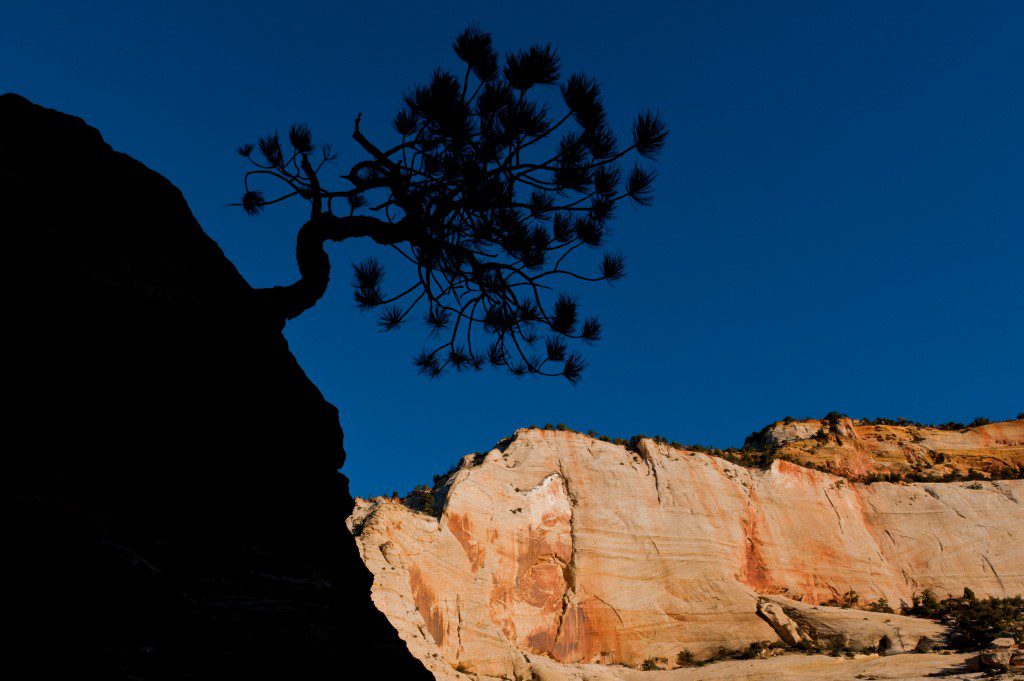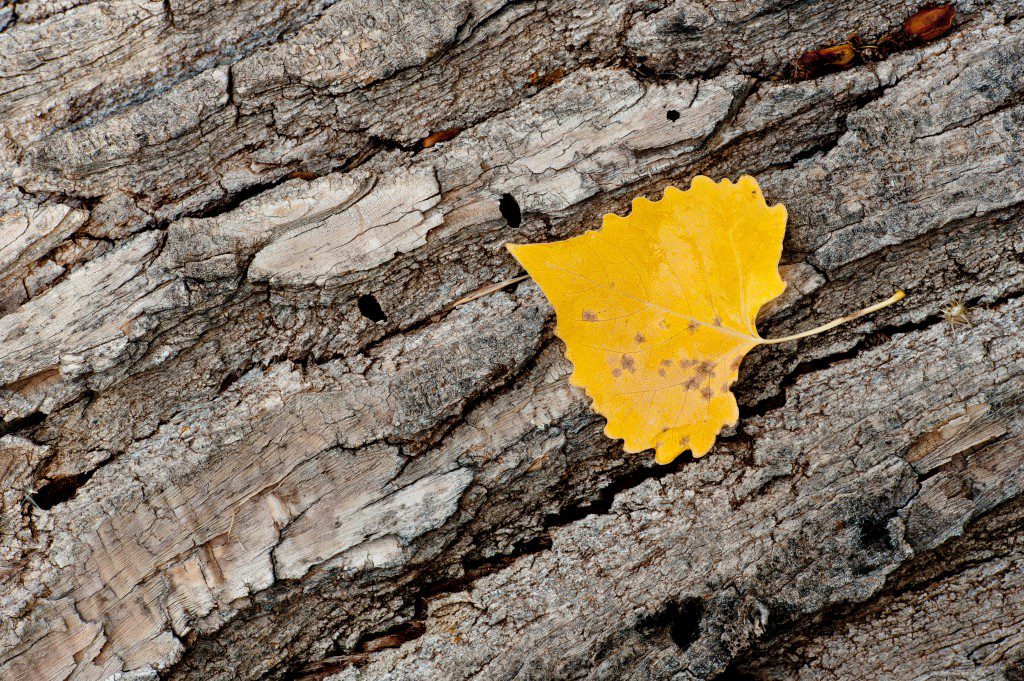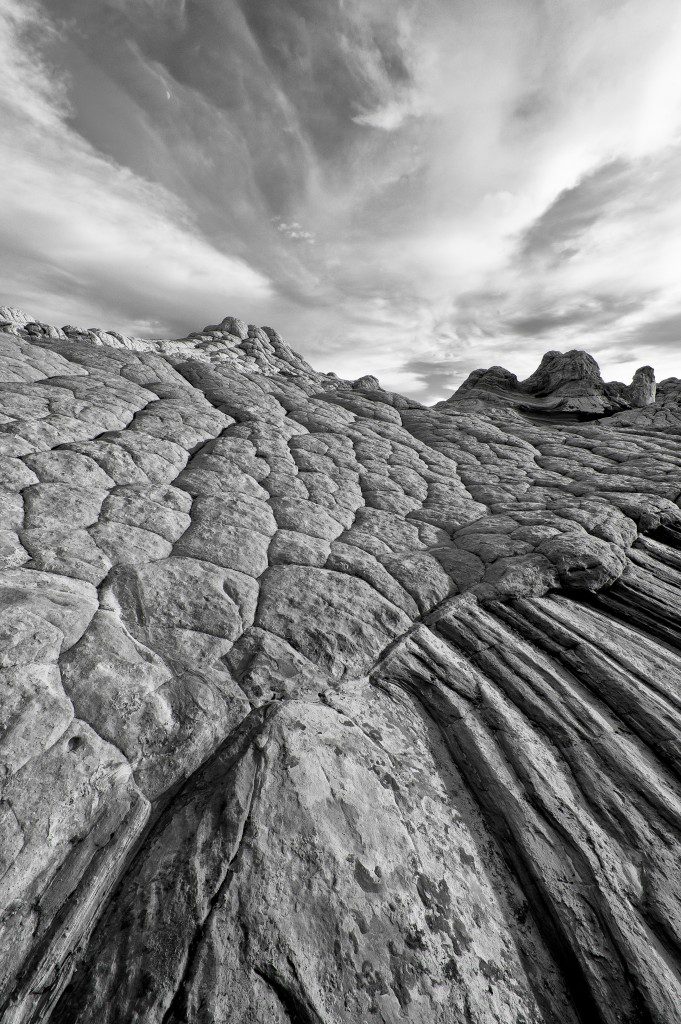
As you turn off Highway 89 in southern Utah heading towards Arizona, if you look carefully, past the Coyote Buttes area, you will see a block of solitary white sandstone jutting up from the horizon. This was our destination for today, a place called White Pocket. It is a remote location requiring the right vehicle and a knowledgable driver to negotiate the rocks and deep sands that make up the path to this place, and it takes a couple of hours to complete the journey. What lies within this block of sandstone is purely out of this world.
You first encounter ‘brain rock’ (shown above) and as you continue to hike in, your own brain can hardly place what your eyes see in any kind of context.

The swirling rock formations are like nothing you have ever seen before and the colors and striations seem to be unique everywhere you look.
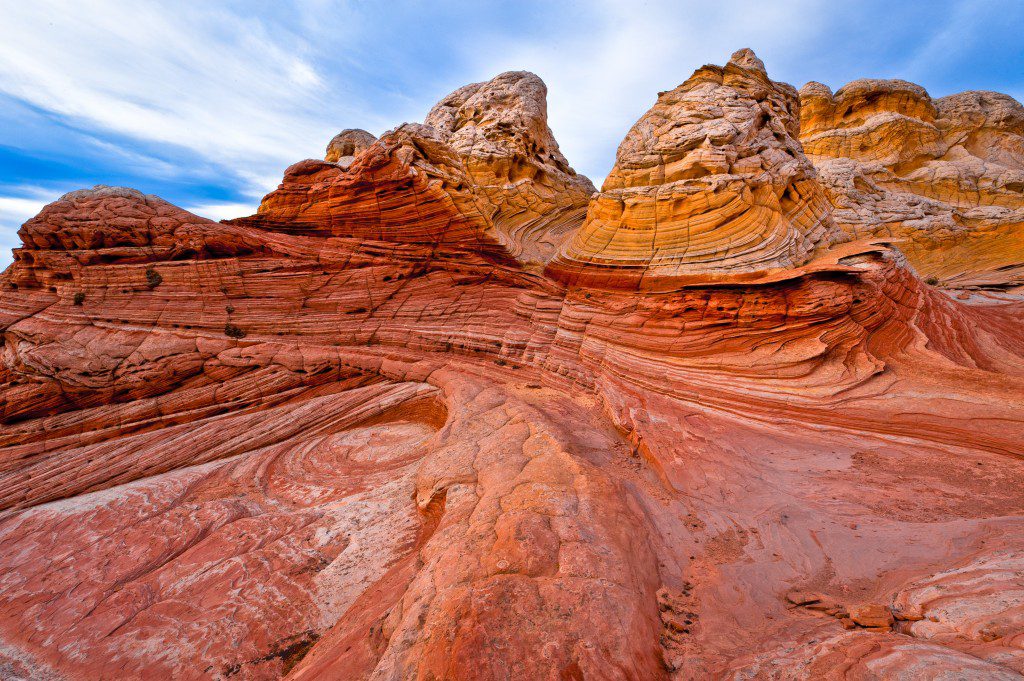
Even though White Pocket is relatively not that large of an area, you could spend weeks (months, years?) photographing here and not capture all of the compositional possibilities. Our guide, Joe Rossbach, asked me what I thought of this place and all I could do was stand there, speechless.
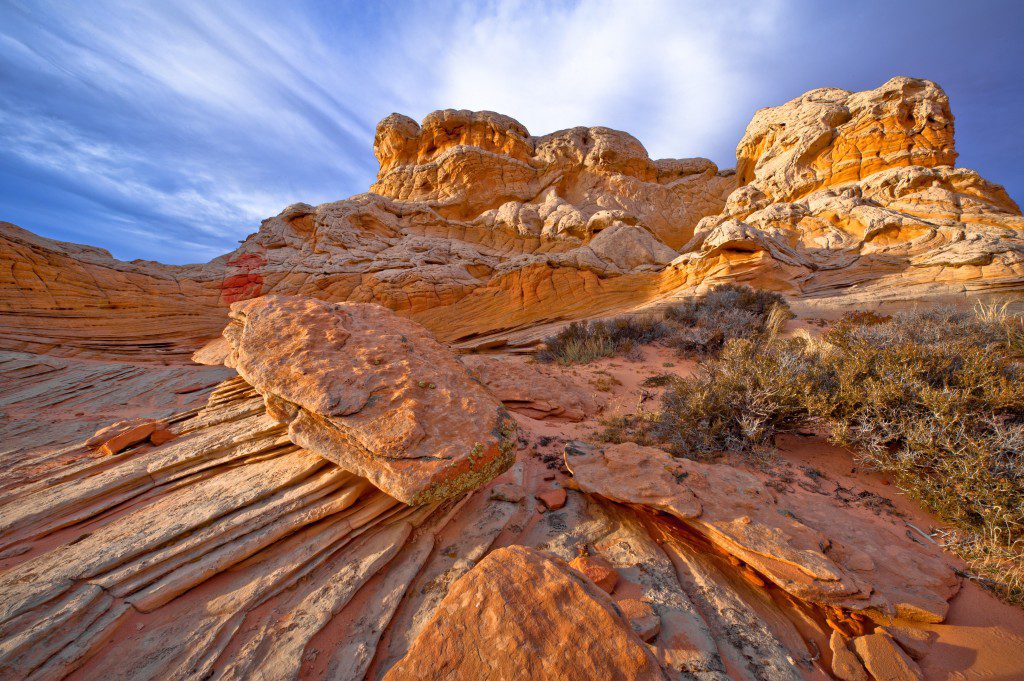
Joe had been here before under cloudless skies and he was hoping that today would provide some nice dramatic clouds. Well, he got his wish as the clouds rolled in. At sunset, we were treated to a fantastic view as the whole sky lit up in a deep orange, adding more drama to the already incredible scenery.
